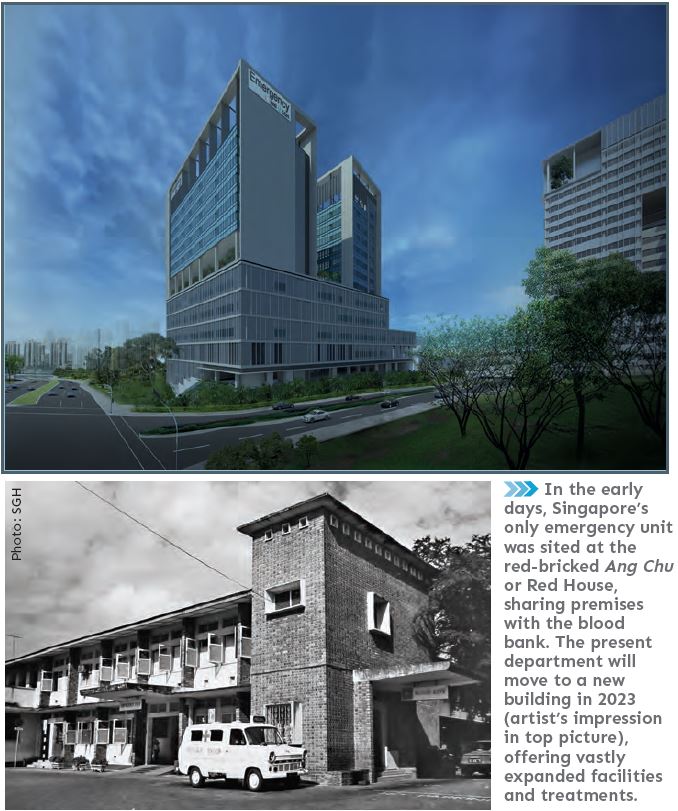SGH’s emergency services have been at the forefront in saving lives during major crises befalling Singapore over the decades.

Singapore General Hospital’s (SGH) Department of Emergency Medicine began life as the nation’s first unit for emergency services in 1948.
Variously known as Casualty Services, Emergency and Outpatient Services, Emergency Unit, and Accident and Emergency or A&E over the years, it only became a full-fledged department in the 1980s, when it moved to its current premises at SGH Block 1. It was around the same time, in 1984, that Emergency Medicine was recognised by the Health Ministry as a medical specialty.
This is despite the important role it has played over the decades in saving lives during mass casualty events — the 1951 and 1964 race riots, the 1978 Spyros tanker explosion, the 1983 cable car disaster, and industrial explosions and fires both at home and in the region.
In the early days, the emergency service was staffed mainly by junior doctors and provided limited investigations, such as basic x-ray. The unit was a place where young doctors went to learn suturing from nurses. Today, the department is staffed by emergency medicine specialists, in tandem with changes in Singapore’s demographics and types of emergency.
The needs and types of patients seen by emergency specialists have evolved over the years, with patient attendances increasing from about 64,000 in 1979 to more than 130,000 in 2017. Meanwhile, more elderly patients with complex and chronic conditions, such as cancer, stroke, heart disease and kidney problems, are being treated, partly as people are living longer due to advances in medical care. In 2017, 34 per cent of SGH emergency patients were 65 years and older, compared to 25 per cent in 2007.
Emergency Medicine will mark its next milestone when it moves to a new home in 2023. It will be vastly expanded, taking several floors of the new building, and will be close to the acute medical wards and pharmacy. There are also plans for an intervention suite for emergency coronary angiograms and neurology intervention procedures, which will allow for a quicker response to cardiac and neurological emergencies.
The new emergency facilities will be equipped with a larger and more advanced decontamination station for mass casualties in the event of industrial or terror incidents. As the building will
also be connected to the main SGH complex and its full range of diagnostic and interventional facilities, all capabilities at SGH and the national specialty centres on SGH Campus can be activated quickly to mount a concerted response in a national crisis. It will also be linked to the new Outram Community Hospital.

